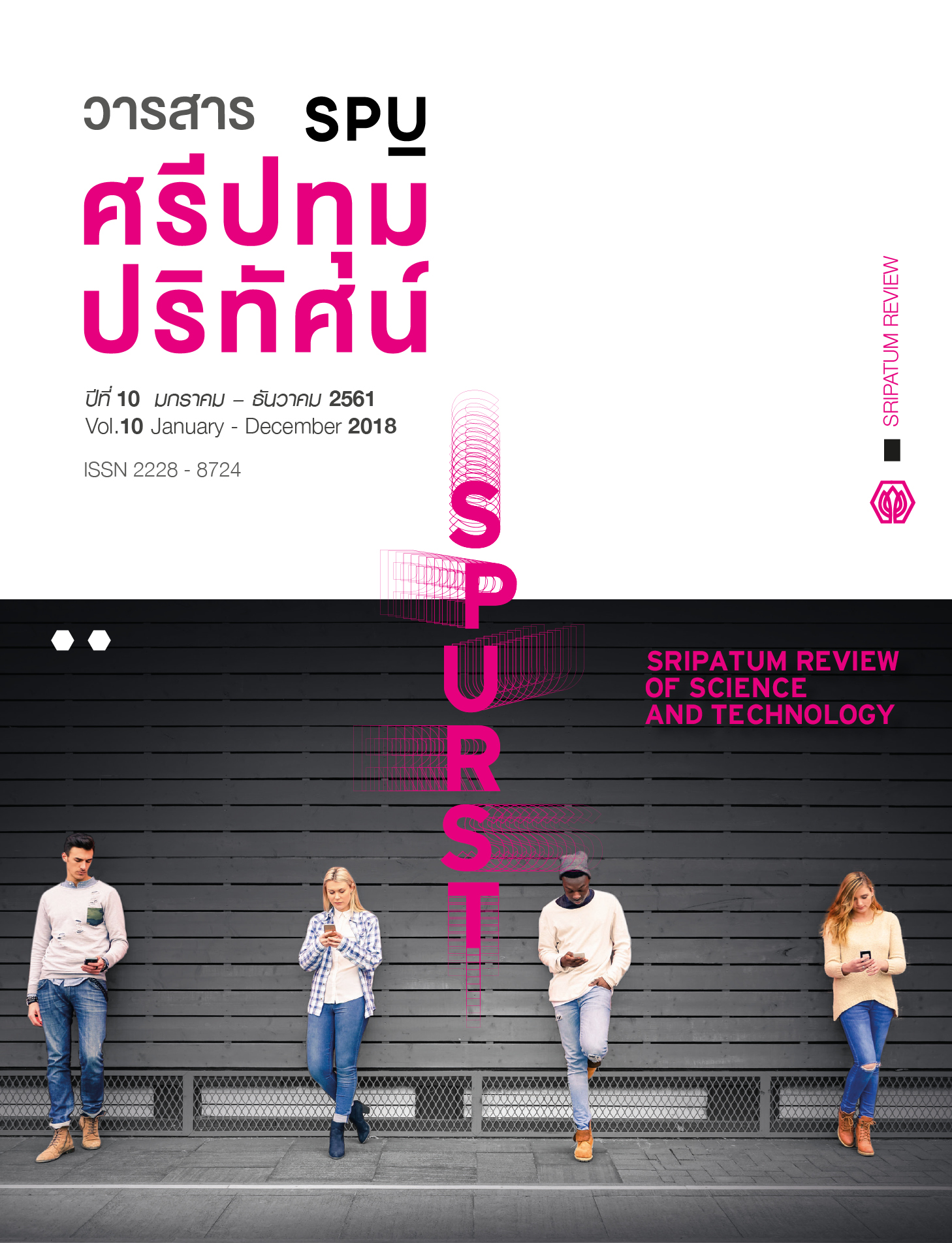Forecasting Income of Overseas Thai Workers with Regression Coefficient Estimation Using Adjusted S-estimator
Main Article Content
Abstract
This research developed a new method of regression coefficient estimation by adjusting S-estimator which used DMST statistic developed from "Q" _"n" in cooperation with Euclidean Distance and Minimum Spanning Tree under the Prim’s Algorithm as the default value in finding QDMST weight. In the process of estimating regression coefficient by applying re-weighted least square method to acquire the equation for forecasting the income of Thai laborers working in foreign countries as stated in the database of the Department of Employment of Thailand, Thai Social Security Office, and Bank of Thailand. The simulative results from 540 scenarios derived from 5 sample sizes, percentage of 6 outliers, 6 parameters, and the characteristics of 3 distributions, namely, normal distribution, Gamma Distribution, and Weibul Distribution, indicated that there were 396 cases in which the Adjusted S-estimator proved to be more effective than S-estimator when focused on mean square error. In most cases, the sampling size was equal to 100 and 200. If 〖" X" 〗_"1i" represents the number of Thai laborers working in Taiwan, "X" _"2i" represents the number of Thai laborers working in Singapore, "X" _"3i" represents the number of Thai laborers working in the other foreign countries accordingly, the research results showed that these variables (〖" X" 〗_"1i" ,"X" _"2i" ,"X" _"3i" ) influenced the income of Thai laborers working overseas ("Y" ̂_"i" ) at the rate of 56.3 percent after considering the adjusted coefficient of determination and naming the coefficient of correlation equal to 0.75. The outcome of regression coefficient estimation by applying adjusted S-estimator as demonstrated is "Y" ̂_"i" = 9813.02816 -0.54163〖" X" 〗_"1i" -1.038199 "X" _"2i" + 0.10425 "X" _"3i" . The Adjusted S-estimator defines MSE equal to 2,678,240.568 and the percentage of MAPE equal to 27.603 while, the S-estimator defines MSE equal to 5,376,983.567and the percentage of MAPE equal to 32.6174.
Article Details
References
Minimum Spanning Tree. Emerging Trends in Computing and Information
Sciences, 2(11), 608-614.
Dave, M. B. and Nakrani, M. B. (2014). Malicious User Detection in Spectrum Sensing for
WRAN Using Different Outliers Detection Techniques. Engineering Trends and
Technology, 9(7), 1405-1420.
Habshah, M., Norazan, M. and Rahmatullah I. A. (2009). The performance of diagnostic-
robust generalized potentials for the identification of multiple high leverage points in linear regression. Applied Statistics, 36(5), 507-520.
Krischetein, T., Liebscher, S. and Becker, C. (2013). Robust estimation of location and scatter
by pruning the minimum spanning tree. Multivariate Analysis, 120(1), 173-184.
Labor Market Research Division, Department of Employment. (2015). Unemployment
Situation Termination and Labor Demand [Online]. Retrieved July 26, 2015, from:
https://www.m-society.go.th/. (in Thai)
Manila Labor Office (Taipei). (2560). The general problem of Thai workers [Online].
Retrieved October 18, 2017, from: http://taipei.mol.go.th/node/309. (in Thai)
Milhano, T., Sequera, J. and Sotto, E. D. (2013). Using S-estimators in Parameter
Identification. The Proceedings of the 16th International Conference on Information Fusion, 9-12 July 2013 at Istanbul, 1058-1065.
Montgomery, D. C., Peck, E. A. and Vining, G. G. (2006). Introductions to Linear
Regression Analysis. 4th ed. New York: John Wiley & Sons.
Ollerer, V., Alfons, A. and Croux, C. (2016). The shooting S-estimator for robust regression. Computational Statistical, 31(3), 829-844.
Panik, M. (2009). Regression Modeling Methods, Theory, and Computation with SAS. New
York: Taylor & Francis Group.
Peter, S. (2014). Algorithm for Clustering Gene Expression Data with Outliers Using Minimum
Spanning Tree. Science and Research, 3(2), 258-265.
Public Relations Division, Ministry of Labour. (2014). Thai Labor Situation Abroad, Journal for Workers, 2(6), 3-30. (in Thai)
Ratniyom, A. and Permpoonwiwat, K. C. (2009). Foreign Labour Market Trend.
Srinakharinwirot Economics Journal, 5(5), 113-120. (in Thai)
Roelant, E., Aelst, V. S. and Croux, C. (2009). Multivariate generalized S-estimators.
Multivariate Analysis, 100(5), 876–887.
Rousseeuw, P. and Yohai, V. (1984). Robust regression by means of S-estimators. The Proceedings of the Stochastische Mathematische Modelle International Conference, 24 June 1984 at Berlin, 265-272.
Rousseeuw, J. and Croux, C. (1993). Alternatives to the median absolute deviation.
American Statistical Association, 88(424), 1273-1283.
Rousseeuw, P. and Leroy, A. M. (2003). Robust regression and outlier detection. New York: John wiley & sons.
Saengprasan, C., Chadcham, S. and Wongkasem, P. (2015). An Evaporation Estimation using
the Modified Ratio Estimator. Research Methodology and Cognitive Science, 13(2),
30-44. (in Thai)
Tabatabai, M. B., Ebay, W. and Singh, K. (1012). TELBS robust linear regression method.
Open Access Medical Statistics, 2(3), 65-84.
Tharmaratnam, K., Claeskens, G., Croux, C. and Salibián-Barrera, M. (2010). S-estimation for penalized regression splines. Computational and Graphical Statistics, 19(3), 609-625.
Yarmohammadi, M. and Mahmoudvand, R. (2010). The Effect of Outliers On Robust And
Resistant Coefficient of Determination In The Linear Regression Models. Academic
Research, 2(3), 133-138.


